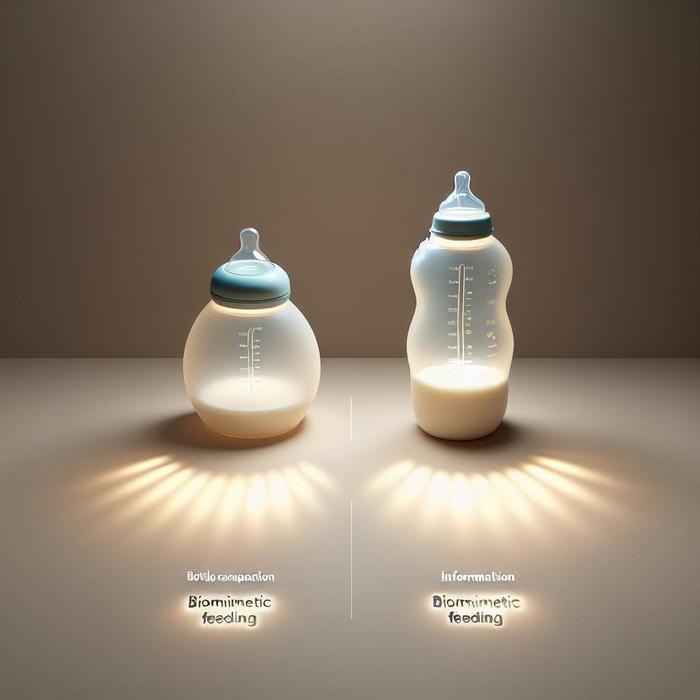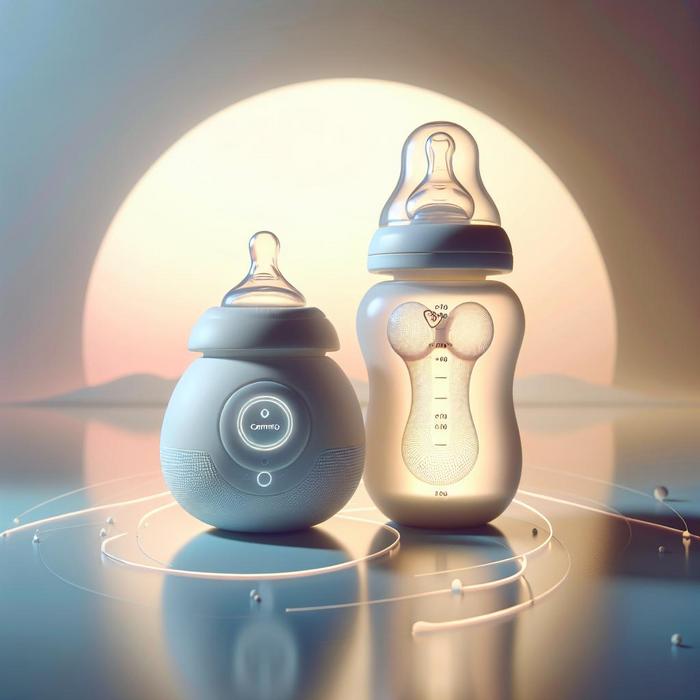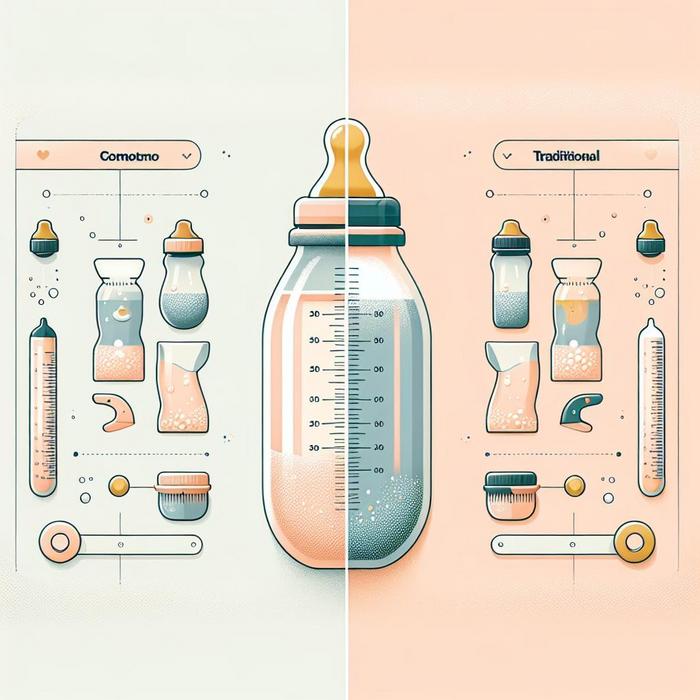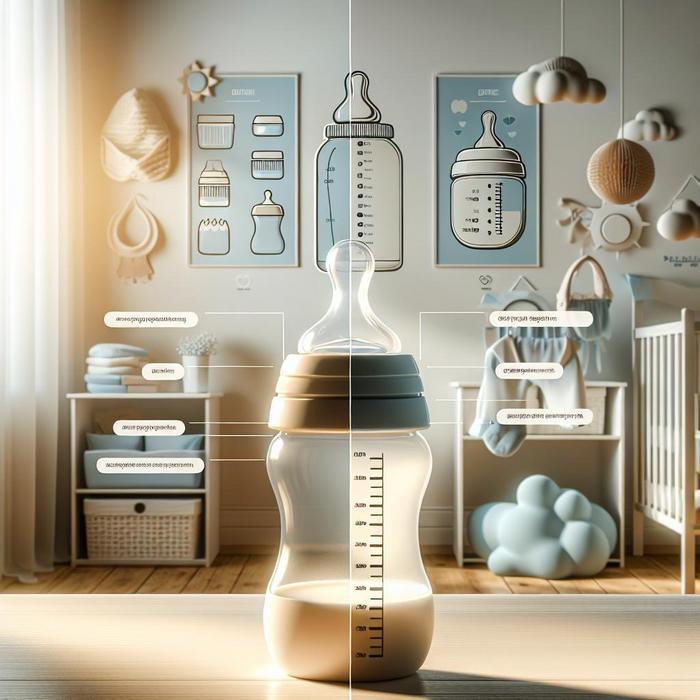An Introduction to Biomimetic Feeding
As a seasoned parent, I can tell you that one of the most crucial aspects of successfully navigating the first year with your child is understanding the concept of biomimetic feeding. It’s a term which might sound a little intimidating at first, but it essentially refers to feeding methods that mimic natural breastfeeding. Research has shown that this approach can significantly reduce bottle rejection and nipple confusion, making your infant’s transition from breast to bottle smoother and stress-free. The good news is that several innovative brands are now specializing in biomimetic feeding solutions.
The Titans of Biomimetic Feeding: Comotomo and Tommee Tippee
When it comes to biomimetic feeding, two brands that continuously stand out are Comotomo and Tommee Tippee. Each of these companies has a unique focus on creating products that closely mimic a mother’s breast to provide optimal comfort and nutrition for your baby.
Comotomo: Pioneers in Biomimetic Feeding
Comotomo is highly revered for their soft, skin-like silicone baby bottles. These bottles are designed to mimic breastfeeding as closely as possible, resulting in lower incidents of bottle rejection and nipple confusion. Comotomo’s focus on biomimetic design is also evident when you consider the easy-to-grip shape of their bottles, which allows your baby to hold the bottle, promoting a sense of independence.
Tommee Tippee: Emulating Nature’s Best
The second contender is Tommee Tippee. Their Closer to Nature bottles are specifically designed to mimic the natural flex, stretch, and movement of a mother’s breast. This naturalistic design approach helps in promoting a seamless transition from breastfeeding to bottle-feeding by making the baby’s feeding experience as close to natural lactation as possible.
Comotomo vs. Tommee Tippee: A Bottle Comparison
When comparing these two brands, it’s clear that both Comotomo and Tommee Tippee have made significant strides in promoting biomimetic feeding. But how do they measure up against each other?
Comotomo’s Strengths: User-Friendly Design
Comotomo bottles are made of ultra-soft, medical-grade silicone that mimics the feel of the breast. These bottles are designed to prevent air intake, reducing colic and fussiness in babies. Moreover, the wide-neck design makes cleaning a breeze, negating the need for special brushes. Comotomo bottles are microwave, dishwasher, and sterilizer safe, making them not just baby-friendly, but also parent-friendly! You can also find various positive reviews extolling the benefits of Comotomo bottles.
Tommee Tippee’s Strengths: Closer to Nature
Tommee Tippee’s Closer to Nature bottles come with a unique, easy-latch-on nipple shape designed with breastfeeding experts to mimic the natural stretch and movement of a mother’s breast. Unlike regular bottles, the Closer to Nature bottles flex and stretch more like the breast, providing your baby with a more natural feeding experience. According to multiple comparisons on Familyhype, many parents find Tommee Tippee’s bottles easy to clean and assemble, which is definitely a plus during those hectic early months.
Other Biomimetic Brands Worth Exploring
If you want to explore other options, brands like Nanobébé and Philips Avent also offer biomimetic feeding solutions worth considering. Nanobébé is particularly known for its products designed to preserve breast milk nutrients and offer ergonomic shapes similar to a mother’s breast. Meanwhile, Philips Avent’s Natural baby bottle features wide, breast-shaped nipples for a natural latch that closely mimics breastfeeding.
Final Thoughts
Choosing the right bottle for your little one can feel like a daunting task, but resources like Biomimetic Bottles can provide insightful information on biomimetic feeding and its impact on infant health. No matter which brand you opt for, remember that the most important thing is that the bottle works for you and your baby, making feeding time a time of bonding and love. Do share your experiences and thoughts in the comments section. We’re in this parenting journey together!
Dealing with Bottle Rejection
Bottle rejection is caused by babies refusing to take a bottle either because they can’t latch onto it properly or find the whole experience uncomfortable or unfamiliar. It’s something I personally struggled with, trying different brands and techniques to finally gain a breakthrough. I discovered the effectiveness of biomimetic feeding through this process. It truly changed the feeding experience for my baby, and I am sure it can for yours, too. I found resources like the WhatToExpect forum particularly useful during this challenging period, as they shed light on various feeding techniques and products such as Comotomo and Tommee Tippee.
Experiment to Find What Works Best
From my time spent scouring the internet and conversing with other parents, I have learned that each baby is unique in their feeding preferences. Some may find the right match with the first bottle introduced, while others may need several trials or even a combination of different bottles. This does not reflect on your parenting skills; it’s just about finding what’s best for your child.
During my feeding journey, I encountered obstacles such as nipple confusion, gassiness, and spit-ups, which led to fussiness. It was an uphill battle that affected my peace and the baby’s health. Biomimetic bottles like Comotomo and Tommee Tippee helped overcome these barriers. Understand that you might have to experiment with different nipples, bottle shapes, materials, and feeding techniques – a tip I found in this enlightening BabyCenter discussion.
The Wonders of Biomimetic Feeding
Tired of the constant “trial and error,” I discovered biomimetic feeding, which enhanced my baby’s feeding experience. Biomimetic feeding — the science of creating baby bottles that mimic the breastfeeding experience — led me to brands like Comotomo, Tommee Tippee and others. This experience was my turning point, as it helped me understand why certain bottles were more effective and resulted in less fussiness and better feeding.
The Battle of Brands
Choosing the right bottle began with understanding what different brands offered. I personally found that the Comotomo’s skin-like silicone design and the Tommee Tippee’s naturalistic design both had their unique advantages. The discussion on Reddit was equally informative and helped me make an informed decision.
Finding What’s Best for Your Baby
What worked best for my child was a combination of two brands: Comotomo and Tommee Tippee. Having two alternatives ensured that my child had a smooth feeding experience, regardless of the situation. As I stated in my LearningMomma post, attempting different bottle models taught me that each baby has a unique preference, and being flexible often leads to successful feeding sessions.
Supportive Community
A significant part of my success story is the strong, understanding community that provided wisdom, guidance, and empathy through every twist and turn. The supportive, engaging discussions I had with other parents on forums and social media platforms bolstered my journey in finding the perfect biomimetic feeding solution for my child.
Savor the Journey
Remember, finally, that this is but a chapter in the journey of parenthood. Savor every milestone, every hiccup. Celebrate your progress and forgive your missteps. Keep pursuing what’s best for your child, and love them every step of the way. As I concluded in an earlier post, the essence of parenthood is found not just in the destination, but also in the journey.






